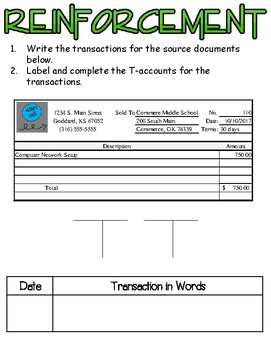Content

The employer, on the other hand, needs to make sure everything is updated in the payroll. Because if not, he/she can be sued and fined, or worse, can go out of business if found guilty of not complying with taxation policies of the region of business operations. As an employee, all you need to do is be aware of the deductions on your paycheck and ask the management for a detailed payslip if they do not provide you with one. Calculating gross wages for employees is a fairly simple process. However, it is probably easiest to use a total gross wages calculator since it can quickly get battery powered natural gas alarm
complicated to calculate the many different types of wages that can come up in any scenario. APS has been providingpayroll and tax compliance servicessince 1996. Our solutions experts are here to help with your payroll processing, including W-2s, 1099s, payroll taxes, automatic gross pay and net pay calculations, and ACA reporting.
SECURE Act 2.0 Removes Penalty for Excess Traditional IRA … – My Federal Retirement
SECURE Act 2.0 Removes Penalty for Excess Traditional IRA ….
Posted: Mon, 30 Jan 2023 14:12:03 GMT [source]
Gross pay is also usually referenced on federal and state income tax brackets. It is the sum total cash earned in all pay periods in a year, which also includes payment for overtime, in the form of cash or otherwise. However, your own gross income per year is the cumulative amount earned from all sources in a financial year. The wage an employee is paid before taxes Gross Pay vs. Net Pay: Definitions and Examples and deductions is their gross salary. Net salary is the pay an employee receives in their paycheck after taxes and deductions—or the pay they actually take home in their paycheck. Because, unlike salaried employees, hourly employees are considered “non-exempt employees”, you are typically required by law to pay them 1.5 times their hourly rate for overtime.
How Do You Calculate Gross Wages?
The amount by which an employee’s disposable earnings are greater than 30 times the minimum wage (currently $7.25 per hour). To calculate Michael’s net pay after FICA and federal taxes, we’ll determine the amount to withhold from his paycheck on the IRS 2020 Semi-Monthly Payroll Period Table. In 2020, the top tax rate (37%) https://online-accounting.net/ applied to taxable income over $518,400 for single filers and over $622,050 for married couples filing jointly. Different tax schedules and rates apply to taxpayers who file as heads of household and married individuals filing separate returns. A separate schedule of tax rates applies to capital gains and dividends.
From there, you can probably come up with a fairly accurate estimation of your net pay. Finally, you can use this figure to find your gross annual income by multiplying it by the 12 months of the year. Now that you have your gross weekly income, multiply this number by 4 to arrive at your rough gross monthly income. Net pay is important for creating a budget and planning your financial future. Unlike gross pay, you probably won’t need to know your net pay when applying for loans or big purchases, but it helps you decide whether you can afford these endeavors. Most professionals understand that deductions will be made from their gross pay to arrive at the amount they will have in their pocket. In interviews, you will also refer to your gross pay when being asked about your salary requirements.
APS Earns #1 Rankings for Software and Support in Latest G2 Reports
In such cases, taxes are left entirely up to the individual worker, and employers are off the tax hook for that particular payment. In actual practice, calculating an employee’s gross vs. net pay can become quite complicated quite fast.

This removes any room for error and legwork you have to do to arrive at a number that may not be entirely correct. Since the dollar amount you’ll end up with after deductions is your net pay, it shows you how much money you’ll have at your disposal immediately after cashing your paycheck. This amount will differ between employees, even if they’re working in the same position with the same responsibilities, because their tax deductions differ. Let’s look at the previous example of a job opening that pays a yearly salary of $50,000. At an average tax rate of 18%, the employee would be paying $9,000 of their income in taxes and actually only receive $41,000 for their work.
Gross income vs. net income in business
To get the calculation right, you also have to keep in mind the hours per week that the person has agreed to work. In many cases, it’s 40 hours per week, but hours can vary for part-time employees. An employee’s pay stub should always note exactly how much they earned in a pay period as well as a line-by-line detailing of their deductions and the final amount of their paycheck . Gross pay includes 100% of the wages, reimbursements, commissions and bonuses an employee earns in a given pay period. The compensation that employees get to take home depends on a variety of payroll deductions, some of which may be voluntary, whereas others are mandatory. If an employee can earn other types of pay, like double time, be sure to include that in your gross wage calculation, too.
- Net pay, also called “take-home-pay,” is the actual dollar amount the employee will receive via check, direct deposit or a direct deposit alternative.
- Employers are responsible for paying half of an employee’s FICA taxes.
- Where this can get a little tricky is when you have multiple sources of income.
- Lenders turn to an individual’s gross annual income to measure their standard salary before getting into the complexities of deductions and taxes.
